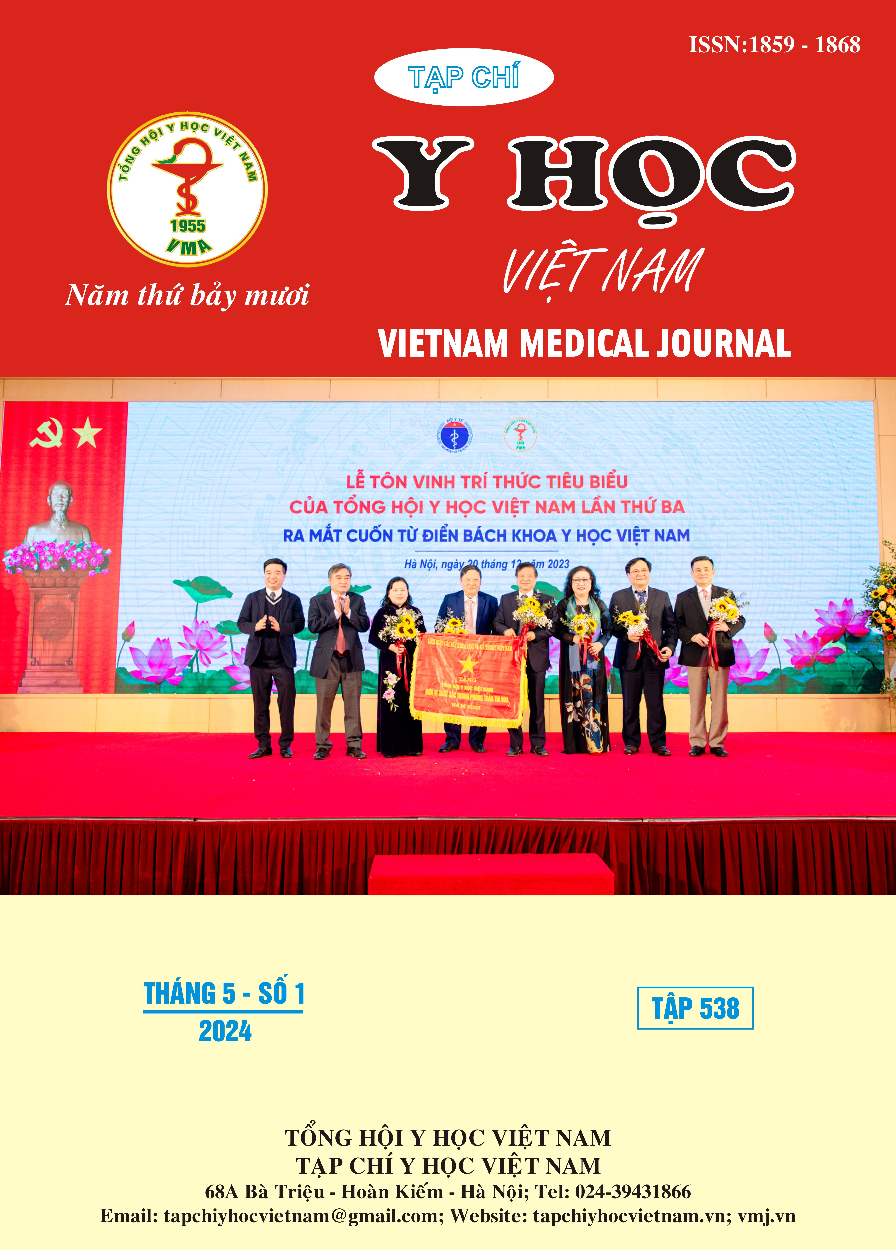PROGNOSIS OF UTERINE CONSERVATIVE SURGERY BASED ON ULTRASOUND IMAGES IN PLACENTA ACCRETA SURGERY
Main Article Content
Abstract
Objectives: Evaluate the role of ultrasound signs and the ability to preserve the uterus in placenta accreta surgery. Subjects and methods: Retrospective descriptive study of 76 pregnant women diagnosed with placenta accreta and cesarean section scars treated at Hanoi Hospital. Results: 76 pregnant women participated in the study, there was no difference in the rate of each single ultrasound sign with the possibility of conservation or hysterectomy with p > 0.05. There is a statistically significant difference in the ability to preserve the uterus between the group with less than 2 signs on ultrasound and the group with 2 or more signs on ultrasound (p = 0.006 < 0.01, Se = 100% , Sp = 19%). There is a statistically significant difference in the hysterectomy rate between the group of pregnant women with 3 or more signs on ultrasound and the group with less than 3 signs on ultrasound (with p = 0.023 < 0.05, Se = 58 .8%, Sp = 66.7%, OR = 2.86), pregnant women with signs of blood vessels perpendicular to the uterine muscle had higher blood loss than the group without this sign with p = 0.047. Conclusions: There is no single ultrasound sign that decides whether to undergo a hysterectomy or preserve the uterus, but pregnant women with 3 signs on ultrasound have a high prognosis for hysterectomy during surgery.
Article Details
Keywords
Placenta accreta, placenta praevia, ultrasound
References
2. G. Garmi and R. Salim (2012). Epidemiology, etiology, diagnosis, and management of placenta accreta. Obstet Gynecol Int, 2012, 873929.
3. S. Wu, M. Kocherginsky andJ. U. Hibbard (2005). Abnormal placentation: twenty-year analysis. Am J Obstet Gynecol, 192 (5), 1458-1461.
4. R. Faranesh, S. Romano, E. Shalev et al (2007). Suggested approach for management of placenta percreta invading the urinary bladder. Obstet Gynecol, 110 (2 Pt 2), 512-515.
5. A. G. Eller, T. F. Porter, P. Soisson et al (2009). Optimal management strategies for placenta accreta. Bjog, 116 (5), 648-654.
6. G. Daskalakis, E. Anastasakis, N. Papantoniou et al (2007). Emergency obstetric hysterectomy. Acta Obstet Gynecol Scand, 86 (2), 223-227.
7. B. Poljak, D. Khairudin, N. Wyn Jones et al (2023). Placenta accreta spectrum: diagnosis and management. Obstetrics, Gynaecology & Reproductive Medicine, 33 (8), 232-238.
8. H. E. Baumann, L. K. A. Pawlik, I. Hoesli et al (2023). Accuracy of ultrasound for the detection of placenta accreta spectrum in a universal screening population. 161 (3), 920-926.
9. T. K. Adu-Bredu, M. J. Rijken, A. J. Nieto-Calvache et al (2023). A simple guide to ultrasound screening for placenta accreta spectrum for improving detection and optimizing management in resource limited settings. 160 (3), 732-741.


